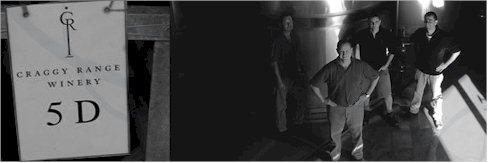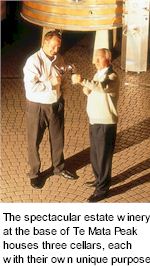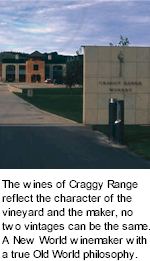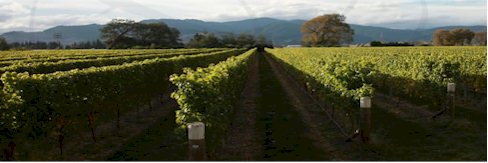


It was this notion of legacy, to create something greater than the here and now, that led Terry Peabody in 1997 to Steve Smith and the development of Craggy Range. Together they set a plan to buy the best vineyard land, select parcels of grapes grown by the country’s best farmers, and to choose a place for their homes, cellars and country restaurant. Their aim was to make single vineyard wines that are true expressions of the vineyard’s terroir. And an ambition to make the greatest wines in the land. No small goal and one that is not achieved without considerable effort.

Craggy Range is not one winery, but several. The spectacular Giants Winery at the base of Te Mata Peak houses three cellars, each with their own unique purpose, waiting for the grapes they were specially designed for. At the state of the art State Highway 50 Winery in the famous Gimblett Gravels, Craggy Range have an entirely integrated operation – from the receiving of grapes through to bottling and warehousing ready for the market. In all, more than 100 different fermentation vessels, some able to ferment and mature as little as 100 cases of wine.
Respect for tradition is imperative, from it comes the heart and soul of great wine. But old fashioned ways can sometimes leave too much to old fashioned chance. Preserving quality requires the use of the most modern methods, technology and understanding what the world has to offer. This is what stands Craggy Range apart, a unique and sometimes contradictory combination of tradition and innovation, old and new, art and technology.
Its winemaking equipment is the most modern and gentle available, grapes can be chilled immediately on arriving into the winery to protect their flavour and integrity. Each fermentation, each technique, every touch to every wine is recorded precisely, providing a traceable record for each and every wine, down to the most minute detail. The wine is bottled with the most advanced bottling technology available, protecting the wine at the stage it is most vulnerable.

When Craggy Range chooses its vineyards nothing is left to chance. Minute variations in temperature are recorded and overlaid on a map where soil specialists record the subtle variations in soil. The row ends curve to match the soil type variation beneath. Special vines, often sourced from French vineyards, are planted in their own unique terroir and cared for by skilled workers.
Rocks, that many farmers may bury to make life easier, are carefully placed underneath the vines to provide reflection and heat for the developing grapes. The vines are managed in balance with their environment in a system of sustainable ecological viticulture that maximises natural input and controls anything synthetic. Every stage of the vine’s growth is measured and compared to ensure the vine is kept in balance and harmony with its age and environment. Technology is an integral part of these highly tuned and precise farming systems – however, it isn’t in charge. The people who look after the vines are the real heroes of these vineyards. Pruning, removal of excess shoots and foliage, thinning, and arranging developing shoots into supporting wires are all done by hand, as no machine can make these intuitive decisions better than a skilled vineyard worker.
These people leave their mark and it is this simple philosophy of footsteps in the vineyard that drives the modern winemaker. The wines of Craggy Range reflect not only the character of the vineyard and the maker, but also the unique weather and cultural aspects of every vintage with no two vintages the same. A New World vigneron with an Old World philosophy.
